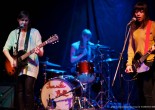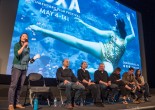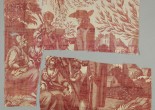Death, Resurrection, Ascension
Interdisciplinary artist Miki Aurora discusses her work in occult, ritual, and dissolving the disillusions of the heteronormative patriarchy
Beyond emerging in some ways, Vancouver artist Miki Aurora (her press release opens with the statement “Internationally exhibited…”) is not yet a household name. But with her beyond-the-box exploration of interdisciplinary art forms, and working within the taboo areas of occult and ritual, pop fame doesn’t appear to be at the top of Aurora’s reasons for doing the work that she does.
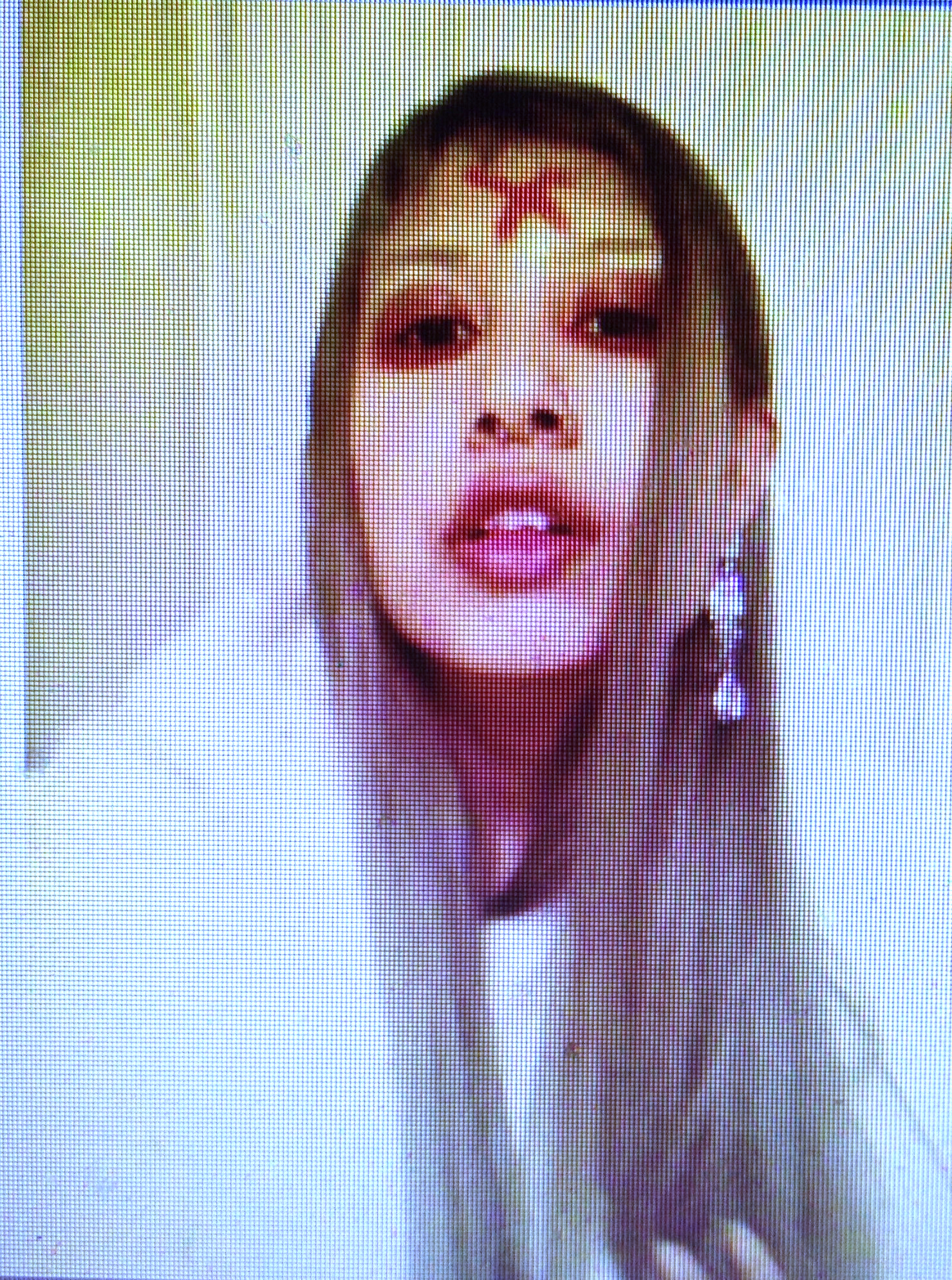
In previous works, Aurora has promoted trans rights, with a particular focus on “dissolv(ing) the disillusions of the heteronormative patriarchy” and “articulat(ing) the destruction of the patriarchal establishment” to “facilitate catharsis for the collective wound of widespread misogyny.”
In her newest piece, a film entitled Death, Resurrection, Ascension, “one part art house film, one part experimental documentary,” catharsis takes centre stage:
Occult Artist Miki Aurora To Produce Art House Film Documenting Ritualistic Trauma Healing
A woman embarks on a ritual with an occultist, to heal a wound inflicted by patriarchal violence.
“The film shows the profound rage experienced by a survivor of abuse, and was entirely unscripted and shot in one take on security cameras installed in the studio.”
Indiegogo campaign video:
VANDOCUMENT: What is your previous experience with the occult? Do you consider occult an art form?
Miki Aurora: I’ve been involved with the occult since I was around sixteen. When I began living and hanging around with this group of crust punk ascetics around eighteen, I became even more fully involved, and it kind of became my whole life. Mostly everyone in our group was involved in the occult. It is this hidden subculture of Vancouver, street kids that just seem like your average crusties on the outside, but have these whole intricate inner worlds to do with the esoteric arts that are just played out in unseen networks. Now I’m no longer just this strange street kid practicing the occult (lol); it’s not my whole life, I like to be connected to the “normal” construct of reality in some ways, like through creating and sharing my work with the world. But I still kind of feel the same way inside haha.
I definitely consider it an art form. At this point in my life, more so than ever. I think the creation process of occult gestures requires a creative way of shifting the mind. ‘Sideways’ thinking. As in, here is the dominant reality, what can we create that is not–against it–but kind of just to the side of what should be physically possible. And, just like with any art form, the tone of your expression can harness a certain grace, or it can harness violence, anything. It’s like a dance. And the way that you put the pieces of the gesture together can create a perfect synthesis, a perfect harmony, that just blossoms at the moment of execution.
VANDOC: You mention that although Death, Resurrection, Ascension is your first foray into film, it continues your portfolio of “social sculpture.” The German artist Joseph Beuys created the term, but for those who do not know, can you explain the term, and if you have a personal interpretation of it, please share it with us.
Aurora: Social sculpture is a way of contextualizing your work as a potential building block for a new societal structure. For me this often takes the form of reality hacking. My method usually involves analyzing and researching the psychological patterns that repeat themselves consistently in Western society (almost every single one can be traced back to perpetuation in entertainment media, if you look closely) and figuring out a way to pinpoint the part of the subconscious where this notion exists in the minds of the average person (if there are any trends). Then I try to figure out a way to address that root in the art work. And sometimes I involve some occult components, too.
VANDOC: Creating art for social change could be said to bridge art with therapy, but not in an “art therapy” way; perhaps more of a psychological healing way. You have mentioned elsewhere that psychology in an important, consistent element within your work.
First, we would like to ask about the psychological narrative depicted in this film.
As well, we’re curious about how you decided to link the psychology of the piece with occultism. How does this compare to the links in your other works?
Aurora: The psychological narrative in Death, Resurrection, Ascension is one of dissolving the line between the conscious and the subconscious, through the personal experience that Brittany (the subject of the film) undergoes in the ritual. The mind typically deals with traumatic experiences by automatically submerging the traumatic incident into a part of the psyche that becomes inaccessible in daily life, to enable the person to function normally. What happens in the ritual is we break through this barrier to allow the catharsis to occur. The spiritual elements of the work comes through the use of occult tools as a means to break through this barrier, in a way that is markedly stark and vivid compared to the often slower paced attempts to break through this barrier in conventional psychotherapeutic settings.
In a way it is very similar to the links between occultism and psychology that are present in my other works: it starts with looking at the basic way the human mind operates, and then using occult methodologies to enhance the impact that can potentially be achieved once accessing those parts of the mind, or by using the occult technologies themselves to gain access to what is normally locked in the subconscious.
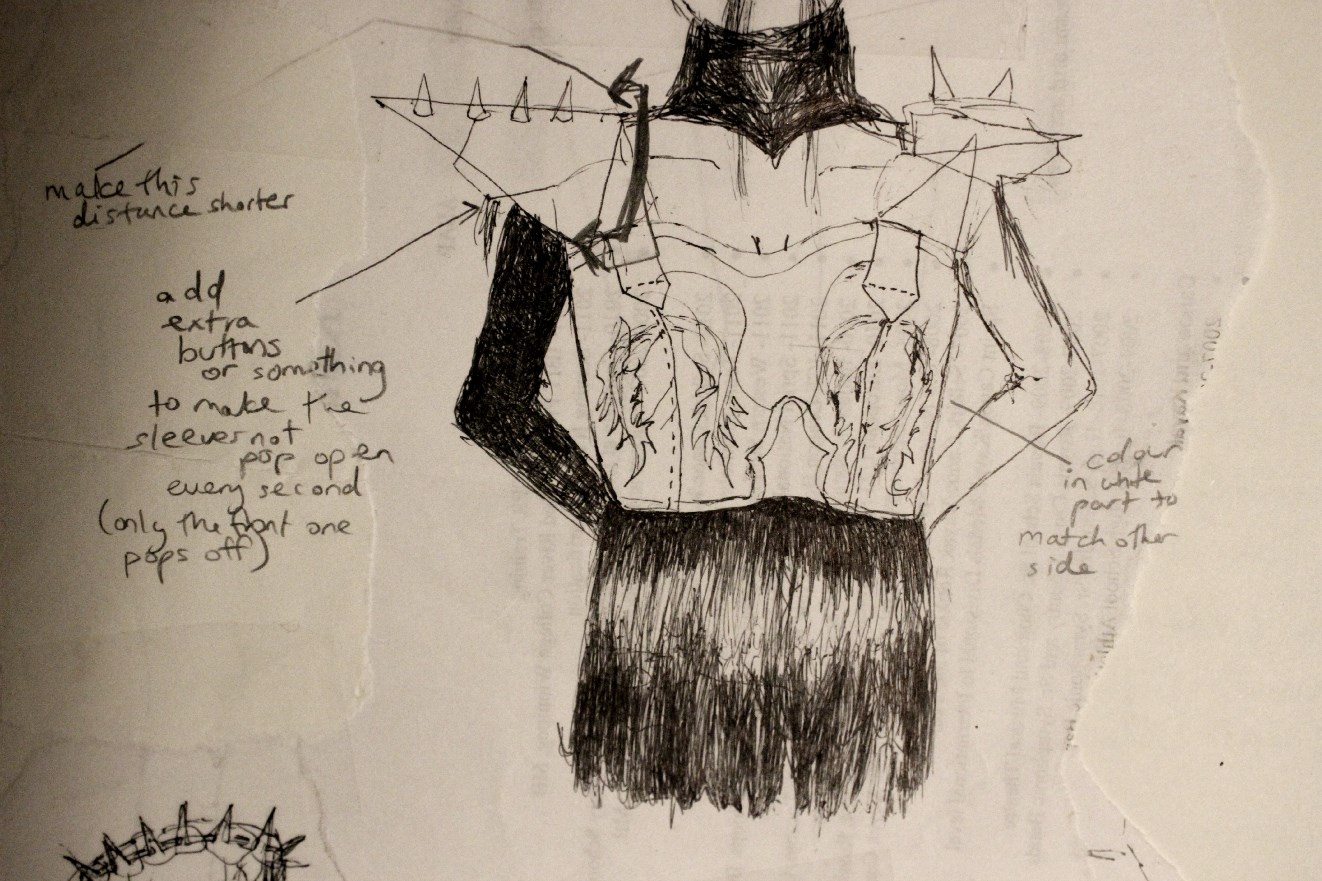
VANDOC: We see that you are deeply involved at all aspects of this piece, from writing to costume creation.
What were some of the logistical or technical difficulties you had to overcome in putting together this narrative and how, if at all, have they affected the direction of the narrative?
Aurora: Yes, I’ve always been mindful of the incorporation of fashion within my works—the wardrobe designs of my characters are always an important part of the narrative. The biggest logistical risk in producing this work was preparing everything for the ritual, knowing that there was no guarantee that the catharsis we wanted to initiate on camera would actually occur. The truth is, you can’t force this kind of ritual. Maybe if I was just doing a ritual with myself, I could, force myself to enter the state. But with another person, there was no way of telling, in the moment that we are about to shoot, if she would tell me that she just wasn’t ready to take that leap into the abyss of her subconscious suffering (which would be completely understandable, of course). So it was a huge gamble. I had to mentally prepare myself, if for whatever reason the ritual was not going to happen, to risk the financial loss of the studio time.
The technical composition was super minimal: to create the fly-on-the-wall aesthetic, the entire piece was shot on security cameras that I purchased online and hooked up inside the studio on the day of the shoot. I was extremely lucky though, with what ended up occurring during the course of the ritual. Actually both Brittany and I were in shock with the intensity of what we’d experienced. When we stopped filming we were both in awe that it had only been a little over 2 hours. We both felt as though it had been ages, as though we had traveled very far without leaving the room. The gamble paid off this time.
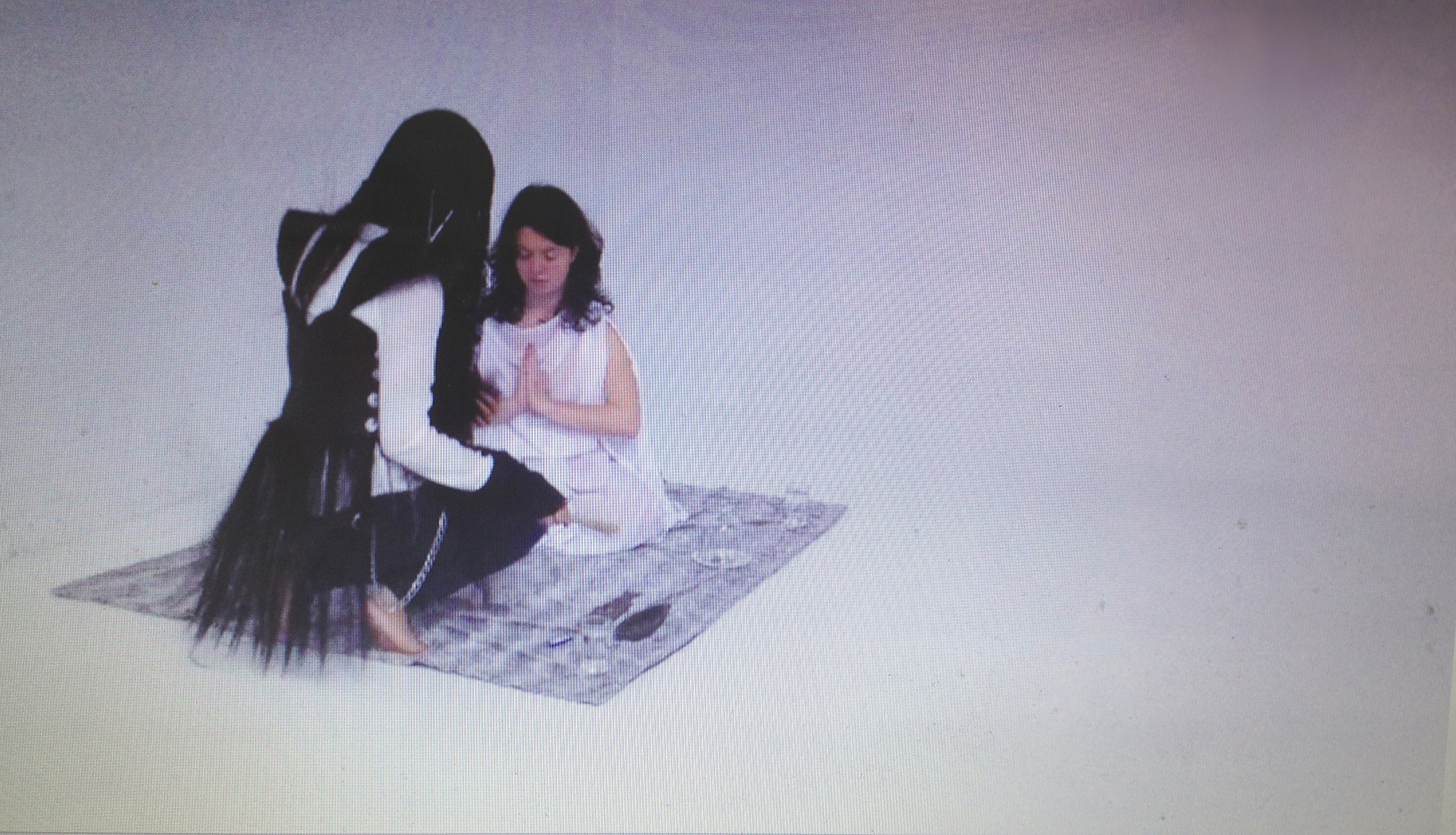
VANDOC: Vancouver-based electronic artist (also host and producer of Mantra Radio on CiTR 101.9fm) Raghunath Khe is collaborating with you to produce the soundtrack for the film. Did you want to say more about Khe, or any of your collaborators, including Brittany Garrity, the woman who is the subject of your film?
Aurora: Raghunath Khe has been producing in the city since he ran an experimental radio show called Plutoninan Nights and was one of the early adopters of the 8-bit music movement, back in the days of .MOD tracker composition, and DIY synthesizer software (which he also designed the code for!). We have a great collaborative relationship. We’re both inspired by the potential for transcendental narratives to be channelled through technology. He often tells me about his experiences during the dawning of the internet era, and the inspiration he harnessed from the fledgling net as though it were a living organism, prior to the corporatization of the net (and how it influenced the music he composed.)
He reappeared on the Vancouver music scene after a 5 year disappearance, during which he had actually become a Vedic monk. After that is when he and I met. I’m so excited to see how he will lend this unique perspective to the musical composition of the Death, Resurrection, Ascension soundtrack.
Brittany Garrity is a dear friend and an extremely lovely woman. Her story, and her willingness to undergo this healing ritual as a means to battle her trauma, makes her an amazing role model for women, and I hope that by watching what happens with her on screen, other women are inspired to undergo the incredible process of attempting to shift aspects of the psyche which are, to many people, perceived to be simply immutable. I believe, through viewing her journey, the world will gain the ability to believe in a so-called impossibility becoming a tangible reality.
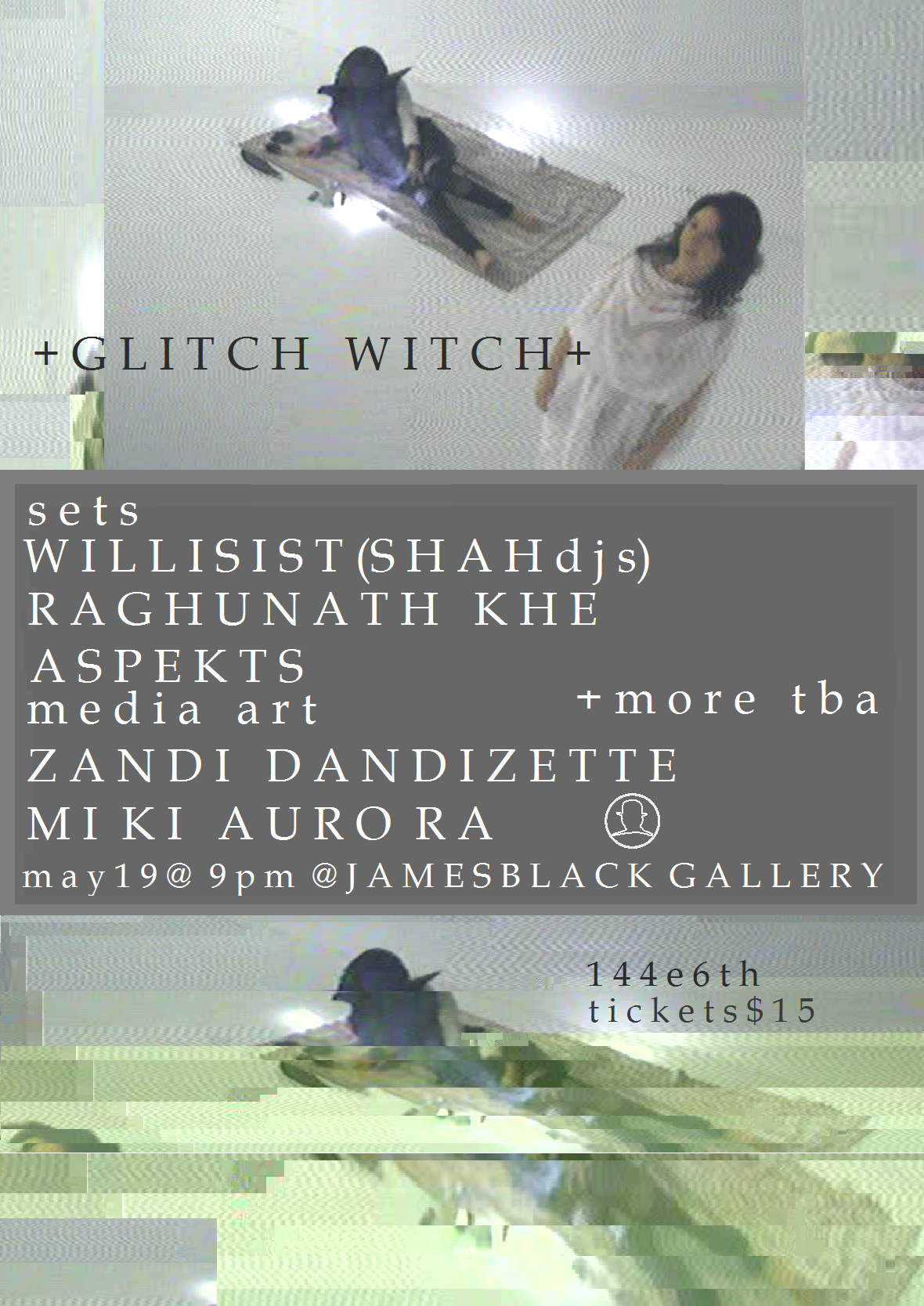
VANDOC: The official screening is coming soon; to build anticipation, you’re unveiling a teaser of the film at an exhibit that you’re curating at James Black Gallery. What else can we expect for this GLITCH.WITCH event?
Aurora: A theme that I have been divulging for multiple interdisciplinary events like this, is the union between the spirit realm and the technosphere.
Guests will be able to experience a preview of the Death, Resurrection, Ascension film being unveiled in the form of .gif art, digital art from Lumen prize winning artist Gregoire A. Meyer about the body as a conduit for a higher spiritual consciousness, and work from the renowned Mexican based architect turned digital artist LATS. Also a multimedia piece from digital artist Zandi Dandizette, who is also the mastermind behind the James Black Gallery space.
Sound wise we will have Raghunath Khe spinning glitch hop, Aspekts – the latest project of Vancouver favourite Hedway and collaborator Brendan Ewach doing a live set of their new material, and a drum ‘n bass set from Willisist, the head of the highly in-demand SHAHdjs.
Listen to this nightclub-worthy 1hr+ mix by Raghunath Khe, who is performing at GLITCH.WITCH
VANDOC: Thank you Miki for the work that you do, and for spending the time with us to talk about Death, Resurrection, Ascension.
As a final question, we must ask: What are your plans for the film? Because in your indiegogo campaign, you mention with honesty that the film is not an easy film to watch, that there is no “sugar-coated” Hollywoodization implemented. Luckily, many documentary film festivals are open to experimental film; actually, they seem to encourage it (Jérôme Clément-Wilz’s Étre Cheval (Horse-Being), which explores the fetizization of animal identification, was awarded Best Film at this year’s DOXA Documentary Film Festival).
We support your goals to eliminate injustices by showing people the results of abuse. Sure, your film may not be “easy watching.” But the attitude that everything we consume needs to be enjoyable, nothing will change. With that, we hope to see your film in next year’s DOXA, or other documentary film festivals like it across the globe.
Aurora: It was a pleasure. Thank you very much! The film will premiere in Vancouver this September, and experimental film festivals are on the drawing board for the next upcoming season. I’m also planning a potential multidisciplinary exhibit of the work that will involve different physical remnants of the ritual.
Aurora has been covered by CITR / Discorder multiple times. To find out more about the artist, in preparation for her fundraiser event, read their articles here.
She has also been featured recently in Sabat Magazine, which “fuses Witchcraft and feminism, ancient archetypes and instant art.”
Death, Resurrection, Ascension on indiegogo
Miki Aurora’s website mikiaurora.com
Article by Ash Tanasiychuk
Interview questions by Hannah Munday and Ash Tanasiychuk
Founder of VANDOCUMENT. Photographer, illustrator, lover and supporter of arts & culture.

